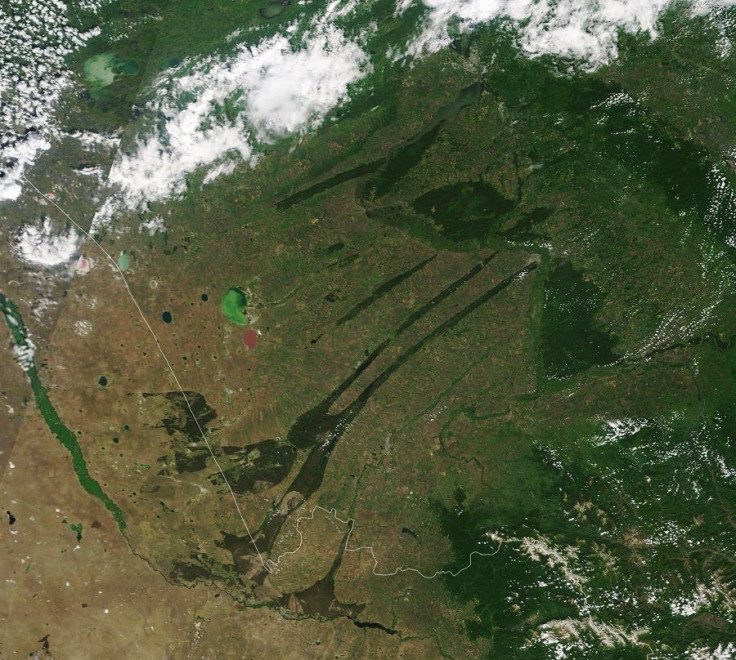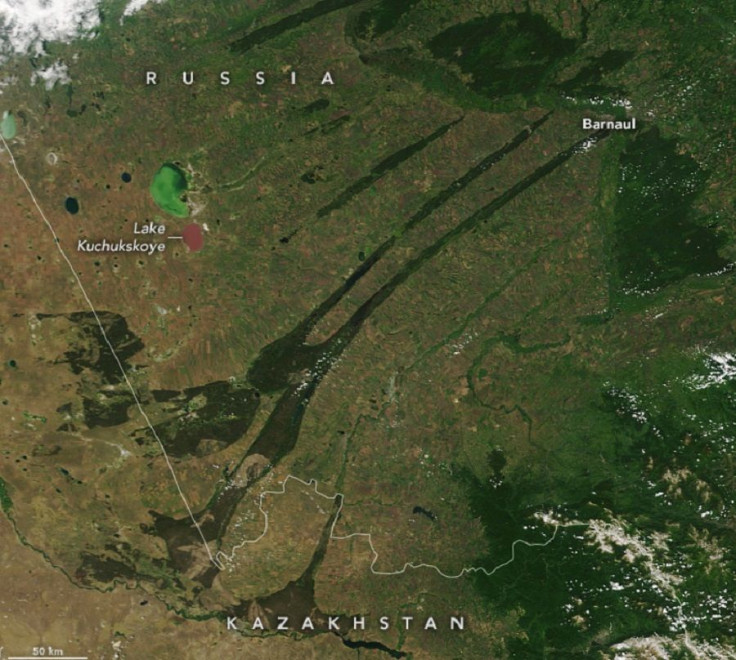Giant Claw Mark? NASA Satellites Capture Unique Feature In A Russian Steppe

KEY POINTS
- NASA satellites captured a feature in the Russian landscape that looks like a claw mark
- April and June images show the vast changes that happened in the region in two months
- The images also captured a nearby lake change from green to pink
A unique feature in the Russian landscape that looks like a giant claw mark, from space, has showed up in satellite images. The images also show a nearby lake turn from green to pink.
Earlier this year, NASA's Terra and Aqua satellites captured a pair of images showing the unique claw mark-like features in the Kulunda steppe in southwestern Russia. In the first image, which was taken last April 1, the landscape is still blanketed with snow but the long marks are still observable as darker lines at the center of the image.

In the second image, taken just about two months later on June 11, the ice has already melted, turning the landscape from pure white to a mixture of greens. The "claw marks" in the image are dark green in color compared to its lighter green surroundings.

According to NASA Earth Observatory, which shared the images, the features are a result of the movement of tectonic plates folding the rock layers to create "shallow, boggy valleys" that appear darker and greener than the surrounding farmlands.
Although the images are just about two months apart, they are vastly different. Apart from the obvious loss of snow, another noticeable change in the image is in nearby Lake Kuchukskoye, which changed from green in April to pink in June.
This change is apparently a seasonal occurrence in salt lakes in the region, wherein they typically turn pink by the last week of June and achieve an intense shade of pink by July and August. This is caused by the salt-loving aquatic organisms that thrive in the summer months when the lakes have lower water levels because of evaporation, making them particularly salty.
However, according to NASA Earth Observatory, this year's color change happened earlier than usual, as the lake had already turned to pink in late May, possibly due to the intense heat wave that Siberia experienced. In fact, other salt lakes in Siberia have also been experiencing early color changes in recent years because of the particularly hot weather brought about by climate change.
The Kulunda steppe in southwestern Russia is one of the most important breadbaskets in the country. Apart from the crops that farmers grow in the area, glauber's salt as well as soda are also extracted from the salt lakes in the area.
The steppe is mostly in Russia but a portion of it extends into Kazakhstan.
© Copyright IBTimes 2025. All rights reserved.






















